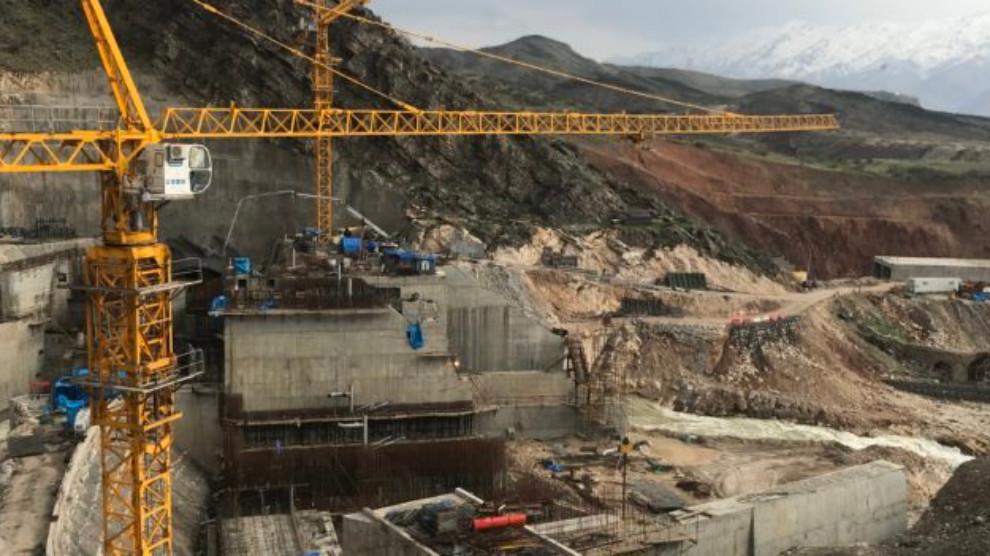Report reviews the dam construction policies in South Kurdistan
New Report by Save the Tigris on the Dam Construction Policies of the Kurdistan Region of Iraq.
New Report by Save the Tigris on the Dam Construction Policies of the Kurdistan Region of Iraq.

The water resources of the Kurdistan Region of Iraq are under stress. Climate change in the region is visible and expected to reduce the output Tigris River and its tributaries: in the past decade the Kurdistan Region has been suffering from extreme weather, droughts and heavy rainfall. Instream waterflows have significantly decreased in the past four decades, while across the Tigris-Euphrates basin precipitation levels have fallen due to rising temperatures. Water infrastructure in the Kurdistan Region has been neglected for decades, environmental regulations safeguarding water quality are not implemented, and water is squandered due to mismanagement. In addition, neighbours Turkey and Iran have been building a large number of dams in the border regions, on rivers that the KRI depends on. Some of these could have a huge impact on the Tigris inflow into the KRI and Iraq. Many more dams have been planned upstream, which will further diminish the Tigris flows downstream. According to UNDP, the water discharge of the Tigris-Euphrates Rivers is set to decrease by 50% between 2009 and 2025. The Kurdistan Regional Government (KRG) which governs the KRI recognizes water security as a priority. To tackle the issues of climate change, upstream dam construction and mismanagement, the strategic goal of the KRG is to construct a large number of dams across its territory, with the aim of storing water for irrigation and hydropower and achieving water self-sufficiency. An astonishingly 245 dams have been proposed by the KRG since 2014, on top of 17 large and moderate existing dams. This would leave no river in the Kurdistan Region undammed.
Documenting the KRG’s dam construction practices, Save the Tigris has published the report “Damming the Kurdistan Region of Iraq: Structural gaps in the KRG dam construction policies”, to share information on the development of dam infrastructure in the Kurdistan Region. The aim is to provide an alternative view on the generally supposed social and economic benefits of dams, and shed a light on the high costs for humans and environment. Dams destroy riverine ecosystems on which plants and animals depend. Some of these are Key Biodiversity Areas that require more study. Environmental flows (natural flow regimes) of the rivers are altered, affecting both up and downstream environments. Water quality decreases and sediments are trapped behind dams which can cause erosion downstream. Dams also cause population displacement and the loss of prime agricultural lands that are submerged under dam reservoirs. The Kurdistan Region contains many examples of dam failure. There is little or no debate inside the KRG about the destructive impacts of its proposed dams on free-flowing rivers, biodiversity, water quality, cultural heritage, livelihoods and homes of populations, and the water security of downstream Federal Iraq. Dams are regarded as strategic projects by the KRG and an indication of development by most of the population in KRI, while little or no consideration is given to the downsides. Proponents in the KRI argue that such projects are a way to meet energy and agricultural demands, while this report argues that they are neither clean or harmless. In addition, detailed information of dams is often missing due to lack of transparency on behalf of authorities and the public is not involved in the process of dam development. The region is scattered with examples of abandoned, failed or poorly designed infrastructure projects, and dams are no exception. This publication aims to fill that gap, by providing an analysis of planned dams and the political economy of dam construction.
For this report scholarly as well as popular sources were consulted. KRG policy documents, assessments and official data related to dam projects were reviewed, and high-level policymakers were interviewed. A number of construction sites were visited. The resulting report assesses the environmental and social impacts of dam construction and explores ways to develop basin-wide comprehensive water policies, providing experts and decision-makers with tools to improve water management in the KRI. It examines the dynamics of international water politics and security in the Upper Tigris basin, and provides an overview of all dams currently under or prioritized for construction in the KRI, demonstrating the scale of dam construction in the region today. Reviewing some of the major gaps in the current dam construction policies of the KRI, the report provides several environmental, cultural, political and social considerations which it argues should be taken into account by dam constructors. The publication concludes with a list of possible alternatives to dam construction for policymakers. This report could also be beneficial for dam construction companies, potential investors in the KRI, international agencies and donors, as well as local and international media and civil society, to learn about the current developments in dam construction in the region.
Read the report here: https://www.savethetigris.org/new-report-by-save-the-tigris-reviews-the-dam-construction-policies-of-the-kurdistan-region/